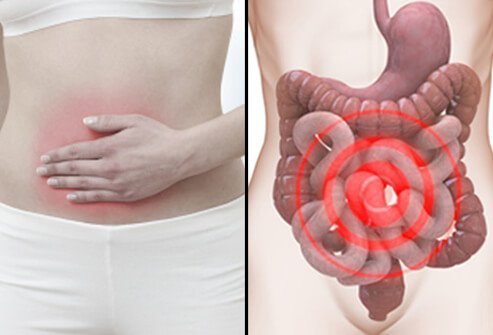Bedbugs – Signs of an Infestation: How to Get Rid
Author: Giselle Robel
Giselle Robel
Category: Health
Bedbugs are insects from the genus Cimex that feed on human blood, usually at night. Their bites can result in a number of health impacts, including skin rashes, psychological effects, and allergic symptoms. Bed bug bites may lead to skin changes ranging from small areas of redness to prominent blisters. Symptoms may take minutes to appear and itchiness is generally present. Some individuals may feel tired or have a fever. Typically, uncovered areas of the body are affected. Their bites are not known to transmit any infectious disease. Complications may rarely include areas of dead skin or vasculitis.
Bedbugs are small, reddish-brown parasitic insects that bite the exposed skin of sleeping humans and animals to feed on their blood. Although bedbugs aren’t known to spread disease, they can cause other public health and economic issues.
About the size of an apple seed, bedbugs hide in the cracks and crevices of beds, box springs, headboards, bed frames, and any other objects around a bed. The risk of encountering bedbugs increases if you spend time in places with high turnovers of nighttime guests such as hotels, hospitals, or homeless shelters.
Bed bug bites are caused primarily by two species of insects: Cimex lectularius (the common bed bug) and Cimex hemipterus , found primarily in the tropics. Their size ranges between 1 and 7 mm. They spread by crawling between nearby locations or by being carried within personal items. Infestation is rarely due to a lack of hygiene but is more common in high-density areas. Diagnosis involves both finding the bugs and the occurrence of compatible symptoms. Bed bugs spend much of their time in dark, hidden locations like mattress seams, or cracks in a wall.
 Bedbugs Bite
Bedbugs Bite
BedBugs Bite Symptoms
It can be difficult to distinguish bedbug bites from other insect bites or rashes. In general, the sites of bedbug bites usually are:
- Red, often with a darker red spot in the middle
- Itchy
- Arranged in a rough line or in a cluster
- Located on the face, neck, arms and hands
Some people have no reaction to bedbug bites, while others experience an allergic reaction that can include severe itching, blisters, or hives.
Immature bedbugs, called nymphs, shed their skins five times before reaching maturity and require a meal of blood before each shedding. Under favorable conditions, the bugs can develop fully in as little as a month and produce three or more generations per year.
Although they are a nuisance, they are not thought to transmit diseases.
When to see a doctor
If you experience allergic reactions or severe skin reactions to bedbug bites, see your doctor for professional treatment.
Where BedBugs Hide
Bedbugs may enter your home undetected through luggage, clothing, used beds and couches, and other items. Their flattened bodies make it possible for them to fit into tiny spaces, about the width of a credit card. Bedbugs do not have nests like ants or bees, but tend to live in groups in hiding places. Their initial hiding places are typically in mattresses, box springs, bed frames, and headboards where they have easy access to people to bite in the night.
Over time, however, they may scatter through the bedroom, moving into any crevice or protected location. They may also spread to nearby rooms or apartments.
Because bedbugs live solely on blood, having them in your home is not a sign of dirtiness. You are as likely to find them in immaculate homes and hotel rooms as in filthy ones.
When Bedbugs Bite
Bedbugs are active mainly at night and usually bite people while they are sleeping. They feed by piercing the skin and withdrawing blood through an elongated beak. The bugs feed from three to 10 minutes to become engorged and then crawl away unnoticed.
Signs of Infestation
If you wake up with itchy areas you didn’t have when you went to sleep, you may have bedbugs, particularly if you got a used bed or other used furniture around the time the bites started. Other signs that you have bedbugs include:
- Blood stains on your sheets or pillowcases
- Dark or rusty spots of bedbug excrement on sheets and mattresses, bed clothes, and walls
- Bedbug fecal spots, egg shells, or shed skins in areas where bedbugs hide
- An offensive, musty odor from the bugs’ scent glands
If you suspect an infestation, remove all bedding and check it carefully for signs of the bugs or their excrement. Remove the dust cover over the bottom of the box springs and examine the seams in the wood framing. Peel back the fabric where it is stapled to the wood frame.
Also, check the area around the bed, including inside books, telephones or radios, the edge of the carpet, and even in electrical outlets. Check your closet, because bedbugs can attach to clothing. If you are uncertain about signs of bedbugs, call an exterminator, who will know what to look for.
How do they spread?
Bedbugs can move from one site to another by traveling on items such as clothing, luggage, furniture, boxes, and bedding.
Bedbugs can crawl about as fast as a ladybug, and can easily travel between floors and rooms in hotels or apartment complexes.
Sign of uncleanliness?
Bedbugs don’t care if their environment is clean or dirty. All they need is a warm host and plenty of hiding places.
Risk factors
Bedbugs are more common in crowded lodgings that experience high turnover in occupancy, such as:
- Apartment complexes
- Dorm rooms
- Homeless shelters
- Hotels
- Cruise ships
- Trains and buses
- Refugee camps
Prevention
Preventing bites
- Cover up
- Because bedbugs don’t tend to burrow under clothing, you may be able to avoid bites by wearing pajamas that cover as much skin as possible.
- Bug spray
- Insect repellents designed to protect against mosquitoes or ticks aren’t very effective against bedbugs.
- Mosquito netting
- Bed nets impregnated with the pesticide permethrin may help protect sleepers against bedbug bites. However, this practice may be helping bedbugs develop resistance to this pesticide.
Preventing infestations
- Secondhand items
- Inspect used bedding items and upholstered furniture carefully before bringing them into your home.
- Hotel precautions
- Check mattress seams for bedbug excrement and place your luggage on tables or dressers instead of on the floor.
- Birds and bats
- Eliminate any neighboring bird and bat habitats that may serve as a refuge for bedbugs.













